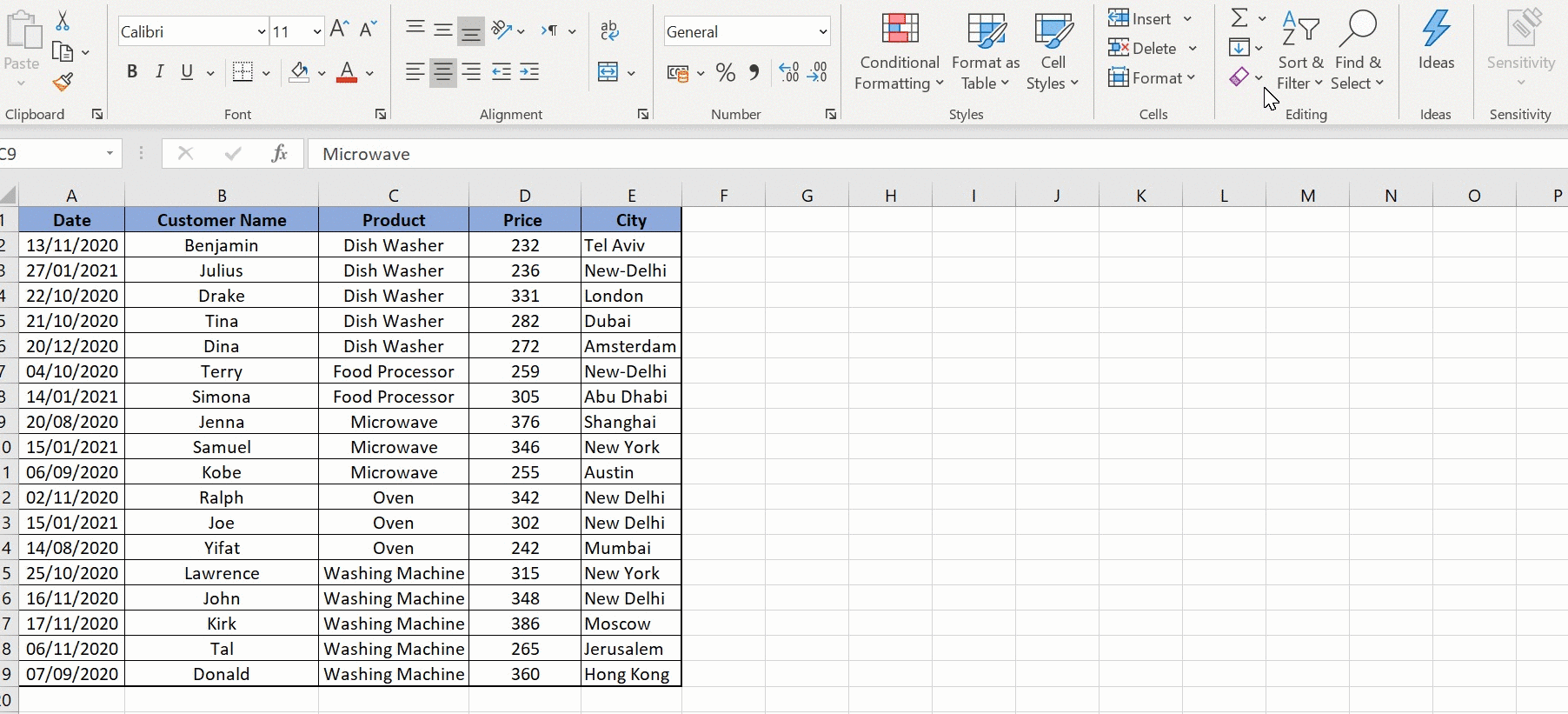Easily Arrange Excel Sheets in Numerical Order Now

Managing spreadsheets can sometimes be an overwhelming task, especially when dealing with numerous sheets that require sorting and organizing for efficient data management. In the realm of data organization, Microsoft Excel stands out as a powerful tool, and one of its lesser-known but highly beneficial features is the ability to arrange sheets in numerical order. This article dives deep into the techniques for organizing your Excel sheets in a numerical sequence, enhancing your data presentation and analysis process.
Why Sort Sheets Numerically?

There are several compelling reasons why you might need to sort Excel sheets in numerical order:
- Enhanced Readability: Data becomes easier to follow and comprehend when sheets are in a logical sequence.
- Efficient Navigation: Quickly find and access sheets without the need to hunt through a disorganized list.
- Data Analysis: Conducting analysis becomes more streamlined when data sets are arranged in a specific numerical order.
- Presentation: Presenting data in numerical order gives a professional appearance to your reports and spreadsheets.
How to Arrange Excel Sheets in Numerical Order

Excel does not have an automatic built-in feature to sort sheets by numbers, but with a few creative workarounds, you can achieve the desired result. Here’s how:
1. Manual Rearranging

If you have a small number of sheets, manually moving sheets can be the simplest approach:
- Right-click on the sheet tab you wish to move.
- Select ‘Move or Copy’ from the context menu.
- In the ‘Move or Copy’ dialog, choose the position in the ‘Before sheet’ list where you want the sheet to be placed.
🗒️ Note: This method works well for a few sheets but becomes cumbersome with a large number of sheets.
2. Using VBA Macros for Sorting Sheets

For more dynamic control over sorting, especially with a large number of sheets, a VBA macro can be your best ally. Here’s a simple VBA script to sort sheets numerically:
Sub SortSheetsNumerically()
Dim i As Integer, j As Integer, sheetCount As Integer
Dim sheetNames() As String
sheetCount = Sheets.Count
ReDim sheetNames(1 To sheetCount)
For i = 1 To sheetCount
sheetNames(i) = Sheets(i).Name
Next i
' Bubble Sort Algorithm to arrange sheet names in numerical order
For i = 1 To sheetCount - 1
For j = i + 1 To sheetCount
If Left(sheetNames(i), Len(sheetNames(i)) - 4) > Left(sheetNames(j), Len(sheetNames(j)) - 4) Then
' Swap the sheet names
Swap sheetNames(i), sheetNames(j)
End If
Next j
Next i
' Reorder sheets based on the sorted array
Application.ScreenUpdating = False
For i = 1 To sheetCount
Sheets(sheetNames(i)).Move After:=Sheets(sheetNames(i - 1))
Next i
Application.ScreenUpdating = True
End Sub
💡 Note: This script assumes your sheet names end with numerical suffixes. Adjustments might be needed if your naming convention is different.
3. Using Add-ins or External Tools

There are also add-ins and external tools available that can simplify the task:
- ExcelJet: A tool with features to manage and sort sheets.
- ASAP Utilities: Offers sorting functionalities for sheets.
- Microsoft Power Query: While mainly for data extraction and transformation, it can be used in conjunction with a custom list to sort sheets.
Tips for Efficient Sheet Sorting

- Use Standard Naming Conventions: Adopt a uniform naming pattern for sheets that allows for easy numerical sorting.
- Backup Your Workbook: Before attempting to rearrange sheets with macros or add-ins, always keep a backup.
- Check Sheet Dependencies: Ensure no formulas or references break when sheets are rearranged.
By incorporating these strategies, not only will you find managing Excel sheets easier, but you'll also elevate the professionalism of your work. Remember, while manual methods are straightforward for small sets of data, VBA macros or external tools provide the scalability and flexibility needed for more complex spreadsheets.
Wrapping up, arranging Excel sheets in numerical order significantly boosts your ability to manage, analyze, and present data effectively. Whether you choose to manually arrange sheets, leverage VBA macros, or explore external tools, the key is to streamline the process to fit your workflow. Through these methods, you can ensure your spreadsheets are always organized and ready for any level of data analysis or presentation.
What if my sheet names do not follow a standard numerical pattern?

+
If your sheet names do not follow a numerical pattern, manual sorting might be your only option, or you could consider renaming sheets to include numerical suffixes.
Can I sort sheets by other criteria?

+
Yes, while numerical order is common, you can also sort sheets alphabetically or by other logical structures using similar techniques as outlined for numerical sorting.
Is it possible to automate sheet sorting upon opening the workbook?

+
Yes, by embedding a VBA macro into your workbook’s Workbook_Open event, you can ensure that sheets are automatically sorted each time the workbook is opened.
What happens to links or formulas when sheets are rearranged?

+
If your workbook uses external references or named ranges, you should check these after rearranging to ensure they are not disrupted. Adjustments might be needed.



